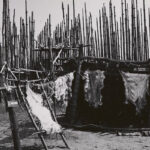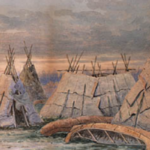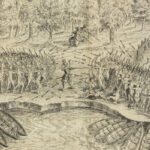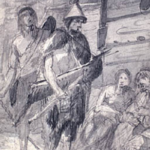The Cultural Landscape of Canada’s First Nations: A Historical and Geographic Overview
The story of Canada’s First Nations is a rich tapestry, woven over millennia across the vast and varied landscapes of this northern land. From the rugged coasts of British Columbia to the windswept plains of the Prairies, from the dense forests of the east to the tundra of the north, the First Nations have shaped and been shaped by the regions they inhabit. Their cultural diversity is immense, reflecting the interplay of geography, resources, and traditions. What follows is an exploration of these cultural groups, their origins, their geographic domains, and the names by which they are known.
The Algonquian Peoples: Guardians of the Eastern Forests
The Algonquian-speaking peoples are among the largest linguistic groups in Canada, spanning a wide swath of the eastern woodlands and subarctic. Their origins trace back thousands of years to a deep connection with the land and its rhythms, a heritage reflected in their enduring respect for nature.
Prominent groups include the Cree, Ojibwe (Anishinaabe), Mi’kmaq, Maliseet (Wolastoqiyik), and Innu (Montagnais-Naskapi). The Cree, one of the largest First Nations groups, range from the boreal forests of Quebec and Ontario to the open plains of Alberta. The Ojibwe, whose territory stretches from the Great Lakes to the central plains, are known for their sophisticated oral traditions and governance systems. Along the Atlantic coast, the Mi’kmaq and Maliseet have long histories of seafaring, diplomacy, and adaptation to the maritime environment. Further north, the Innu are renowned for their deep spiritual connection to the caribou herds that have sustained their way of life.
The Haudenosaunee Confederacy: Architects of Alliance
In the fertile lands of the St. Lawrence Valley and southern Ontario, the Haudenosaunee, or Iroquois Confederacy, established one of the most sophisticated political systems in pre-contact North America. Comprised of six nations—the Mohawk, Oneida, Onondaga, Cayuga, Seneca, and later the Tuscarora—the Confederacy’s origins are steeped in legend, centred on the Great Peacemaker who united warring factions under the Great Law of Peace.
This governance system, based on consensus and balance, profoundly influenced both Indigenous and colonial politics. The Haudenosaunee’s mastery of agriculture, particularly their cultivation of the “Three Sisters” (corn, beans, and squash), enabled them to sustain large settlements and become formidable allies—or adversaries—in the fur trade and European conflicts.
The Dene Peoples: Stewards of the Subarctic
To the north, spanning the vast boreal forests and tundra, lie the territories of the Dene, speakers of Athabaskan languages. The Dene trace their origins to ancient migrations across the Bering Strait, and their culture remains deeply tied to the land and its cycles.
The Chipewyan (Denesuline), Tlicho (Dogrib), Gwich’in, and others have thrived in environments often considered harsh by outsiders. These groups developed a profound understanding of the subarctic’s natural systems, employing extensive knowledge of animal behaviour, particularly the caribou and fish that sustain them. Their oral traditions speak of ancient travels and interactions, not only among themselves but also with neighbouring Inuit and Cree groups.
The Coastal First Nations: Navigators of the Pacific
On the temperate west coast, the Haida, Tsimshian, Nuu-chah-nulth, and Kwakwaka’wakw peoples have long been celebrated for their maritime prowess, artistry, and social complexity. Their origins are intertwined with the dense rainforests and abundant marine life of the Pacific Northwest, where salmon, cedar, and whales are central to their cultural and spiritual identities.
The Haida, of Haida Gwaii, are renowned for their monumental totem poles and sophisticated ocean-going canoes. The Kwakwaka’wakw of Vancouver Island are famed for their potlatch ceremonies, intricate masks, and dances. The Tsimshian and Nuu-chah-nulth also possess rich ceremonial traditions and deep-rooted connections to their lands and waters.
The Plains First Nations: Guardians of the Grasslands
The open prairies of Alberta, Saskatchewan, and Manitoba are home to the Blackfoot Confederacy (Niitsitapi), Plains Cree, and Assiniboine (Nakota), among others. These nations developed cultures shaped by the buffalo herds that once roamed the grasslands in the millions.
The Blackfoot Confederacy, comprised of the Siksika, Piikani, and Kainai (Blood Tribe), were expert hunters and warriors, maintaining a semi-nomadic lifestyle centred on buffalo hunting. Their spiritual practices, such as the Sun Dance, reflect a deep reverence for the natural world. The Plains Cree, closely connected to their forest-dwelling relatives, adapted to the grasslands with equal skill, employing elaborate kinship systems to maintain community cohesion.
The Salish and Interior Peoples: Living with the Land
In British Columbia’s rugged interior and along its southern coast, the Salish peoples cultivated societies deeply in tune with their environment. The Coast Salish were expert fisherfolk, their culture revolving around salmon runs and the abundant resources of the Pacific coastline. Inland, the Secwepemc (Shuswap) and Nlaka’pamux (Thompson) peoples mastered life in mountainous regions, developing complex trade networks and seasonal migrations.
The Tlingit and Ktunaxa: Unique and Isolated Peoples
Two distinct groups with unique cultural identities are the Tlingit and the Ktunaxa. The Tlingit, whose territory stretches from northwestern British Columbia into Alaska, are known for their sophisticated clan system and exquisite artwork, particularly their Chilkat weaving and carvings. The Ktunaxa, inhabiting the southeastern corner of British Columbia, speak a language isolate unrelated to any other. Their traditions reflect a deep connection to the Kootenay region’s lakes and mountains.
A Mosaic of Nations
Canada’s First Nations embody a mosaic of cultural diversity, each group a distinct thread in the broader fabric of the nation’s history. While their origins and geographic territories vary widely, they share a common resilience and commitment to preserving their heritage. Whether through their traditional governance systems, spiritual practices, or enduring connections to the land, the First Nations of Canada offer a profound testament to the strength and adaptability of Indigenous peoples.
This exploration is but a glimpse into the depth of their cultures—a reminder that each nation holds stories and traditions that enrich Canada’s identity, past and present.



